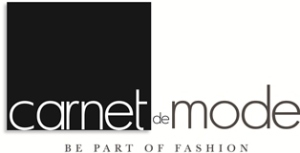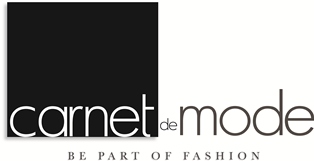 A Q&A with Carnet de Mode founder Arbia Smiti. The Paris-based startup raised $1.5 million in Series A funding from Elaia Partners and Angel investors. The company is a fashion e-tailer focused on giving consumers direct access to up-and-coming designers. Carnet de Mode was founded in 2011.
A Q&A with Carnet de Mode founder Arbia Smiti. The Paris-based startup raised $1.5 million in Series A funding from Elaia Partners and Angel investors. The company is a fashion e-tailer focused on giving consumers direct access to up-and-coming designers. Carnet de Mode was founded in 2011.
SUB: Please describe Carnet de Mode and your value proposition.
Smiti: Carnet de Mode is an international marketplace providing a unique and cutting-edge selection of fashion items. Discovered here in Paris, the most talented designers of tomorrow present their ready-to-wear and accessory collections—garments, shoes, leather goods and jewelry with this ineffable French touch.
The problem that CDM has set out to solve is that it’s difficult for fashion designers to access financing for production, as well as their communication and marketing. Most emerging designers don’t have an online presence online or an e-shop and instead sell to a middle person to distribute their collections on their behalf. Meanwhile, customers don’t have easy access to new and emerging designers and can’t find original and unique pieces that are different from the brands already available in shops.
CDM solves this by offering designers a platform that gives them a personalized e-shop to present their current and future collections and manage their sales and logistics worldwide. The includes a pre-order facility so that fans can essentially crowdfund their future work in return for getting their hands on original and unique pieces from otherwise inaccessible designers on a single platform.
SUB: Who are your target markets and users?
Smiti: France, UK and USA in the first step, then will follow Asia and Middle East. The users are mostly women between 18-and 45-years old passionate about fashion and looking for an original and creative design or garment.
SUB: Who do you consider to be your competition?
Smiti: Boticca, Notjustalabel and Farfetch.
SUB: What differentiates Carnet de Mode from the competition?
Smiti: We offer a risk-free solution to the emerging designers, including an online boutique and exposure about their brands to customers worldwide, so that they can focus on designing and creating exquisite collections without financing. There is a big need from thousands of designers everywhere for a service like ours. Today we receive more than a hundred applications from designers each month thanks to positive word-of-mouth between designers.
I think CDM could be very complementary to traditional fashion ecommerce sites since our catalogue is unique and exclusive. We could complete any traditional fashion catalogue of established brands by adding a new offering, which is becoming necessary with the new generations who are looking for different sources and avant-garde fashion. We also curate designers directly and offer permanent boutiques, unlike flash sale sites.
With Carnet de Mode handling the business side, young designers are afforded creative freedom. While many e-commerce sites sell well-known and established brands, Carnet de Mode offers an exclusive assortment of clothing and accessories produced by the talent of tomorrow.
SUB: What was the inspiration behind the idea for Carnet de Mode? Was there an ‘aha’ moment, or was the idea more gradual in developing?
Smiti: After my engineering studies and my MBA in marketing at ESCP, I worked as a marketing manager at L’Oréal Group for a year and then decided to launch my own business in ecommerce. I am very passionate about fashion and had launched a fashion blog in 2009: carnetdemode.fr , in parallel to my work. So obviously, creating a startup in fashion came naturally. Since I hadn’t any knowledge in ecommerce, I decided to work as a purchasing manager for a flash sales website for a few months to learn all the ecommerce processes from inside before jumping in a big adventure like Carnet de Mode. What I learned is: 1.) most of ecommerce websites are not profitable because of the big expenses of logistics, photo shooting, and stock purchasing before selling and the small margins they take; 2.) all ecommerce websites sell known brands and this market became totally saturated and needs lots of financial investments to get known brands online—negotiating with brands, buying stocks beforehand, lots of competition.
So I decided to go to a new nascent market: young emerging designers—rare competition, easier sourcing and a fast growing market—and to create a marketplace instead of a traditional B2C ecommerce website so that all logistics and photo shooting are totally handled by the designers themselves from any place in the world to everywhere.
SUB: What’s the vision behind Carnet de Mode?
Smiti: The idea of Carnet de Mode was to create a curated international marketplace for all independent and talented designers—a platform where fashion lovers can find all kind of unique and original collections from professional designers. So, we planned a three-step strategy.
First step in 2011: For very young designers who have difficulties to produce their first collections. We created a laboratory experimental platform called ‘Pre-collections’ to showcase future collections—six months to a year before the season—of handpicked young talents and we invited all fashion lovers to pre-order their favorite pieces for 40 percent off their future retail price and wait for a quota to be reached before launching the production, which finances the production of the designer collection by the customers themselves, and helps the designer getting an instructive feedback about his collection beforehand.
Second step in 2012: For young designers who already produced their collections and sell them in many physical multi-brand boutiques. We launched the marketplace in French and in English to offer these designers a very user-friendly plug-and-play storefront that enables them to create instantly their own corner on our platform, have an online boutique for free and an expert team that will invest in marketing and communication to help them get the exposure they need—PR, partnerships with medias, social medias—and attract international customers to buy their collections. The designers edit their collections by themselves and we manage to check and translate before publishing their collections. We also handle customer service and we act as an intermediate between designers and customers all over the world. The customer then receives his order from the designer etailer directly with a customized packaging and personal message from the designer to help create the intimate relationship we aimed to form between designers and their fans.
Third step in 2013: For established and known designers, we are launching very soon a boutiques segment on our marketplace to offer the same services to multi-brand physical boutiques in Paris and then the rest of the big cities in the world to reach established designers through the boutiques who own their collections and can manage logistics instead of them. We help boutiques to have an online corner for free as well as large investments in marketing and communication to help them get exposure and attract new customers they couldn’t reach before locally. We help them sell their catalogue on an online distribution channel and we help customers buy from their favorite boutiques from anywhere in the world.
SUB: You recently raised $1.5 million in Series A funding. Why was this a particularly good time to raise funding?
Smiti: This financing round will enable us to hire senior profiles to strengthen the team, invest in marketing to grow our community of customers worldwide, and to further develop our services for fashion designers.
SUB: Do you have plans to raise more venture funding in the near future?
Smiti: Not before mid-2014, hopefully.
SUB: What have the most significant obstacles been so far to building the company?
Smiti: Lack of financing.
SUB: How does the company generate revenue or plan to generate revenue?
Smiti: We sell garments ready to wear and accessories—jewelry, shoes, bags, scarves. We cash all the sales generated on the platform and we pay 50 percent of the sales to the designers 30 days after the reception of the package by the client.
SUB: What are your goals for Carnet de Mode over the next year or so?
Smiti: Reach 1.5 million€ at the end of 2013, publish 500 designers from all around the world, manage more than 30 multi-brand boutiques corners’ on our platform.
Carnet de Mode – www.carnetdemode.com











